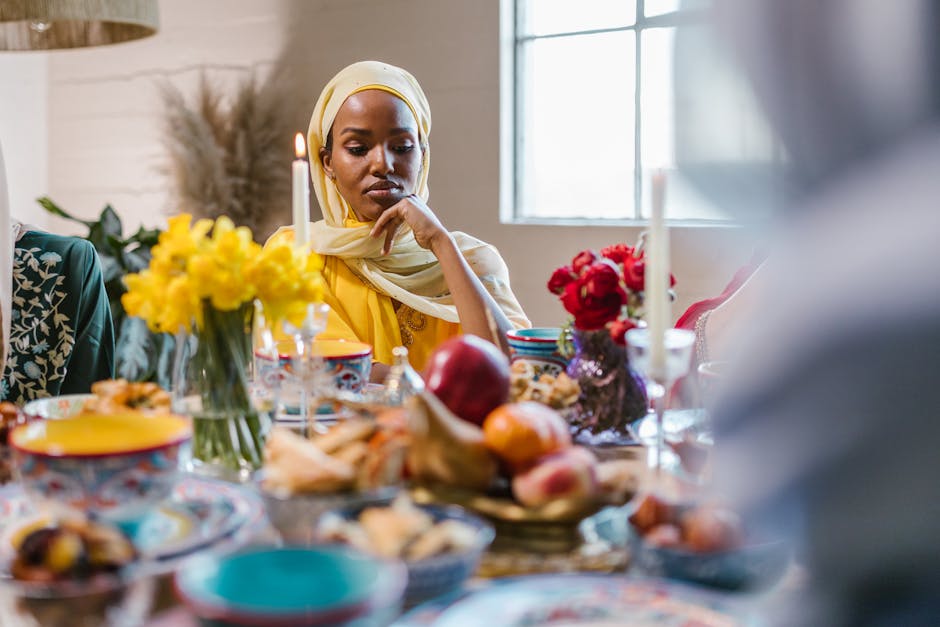The Role of Food in Cultural Identity

Sharing the role of good in cultural Identity and how traditional dishes tell our stories. Food is more than just sustenance. For many cultures, traditional dishes are living symbols of history, values, and identity.
From the steamy bowls of jollof rice in West Africa to the delicate sushi rolls in Japan, traditional food is often a reflection of who we are, where we come from, and the stories we carry with us.
These dishes do more than fill our stomachs; they connect us to our roots, share our cultural narratives, and preserve long-held traditions. In this exploration, we’ll delve into how food plays a pivotal role in cultural identity and how traditional dishes act as storytellers of our past.
Food as a Cultural Mirror
When we think about food, we often think of the flavors, the smells, or the memories attached to it. But food can also be an important historical artifact.
Each traditional dish tells a story which can be about migration, survival, colonization, or innovation. For instance, Mexican mole, a rich sauce with a complex blend of spices and chocolate, represents indigenous Mesoamerican traditions, while also absorbing influences from Spanish colonization.
Similarly, the hearty stews of Eastern Europe reflect a history of scarcity and resilience. These dishes do not simply nourish the body; they preserve the essence of cultural identity across generations.
The Role of Ingredients in Cultural Narratives
One of the key elements of traditional food is its ingredients. Often, these ingredients are deeply tied to the land and the people who cultivated them. For example, in India, the use of spices like turmeric and cumin isn’t just about flavor; these spices are symbolic of the country’s vast agricultural history, shaped by trade routes and local farming traditions.
In the Caribbean, dishes like jerk chicken reflect a blend of African, indigenous, and European ingredients, telling a story of colonization, the transatlantic slave trade, and cultural fusion. Each ingredient holds a piece of the puzzle, a clue to understanding the broader historical picture.
Food as a Bridge Between Generations
Traditional dishes often serve as the bridge between past and present generations. These recipes, passed down from grandparents to parents and from parents to children, are a form of cultural inheritance.
Remembered, as a child, my grandmother would make a large pot of yam porridge, a dish that we all eagerly gathered around. While she stirred, she’d share stories of her childhood, the struggles of her parents, and how food, like the yam, had been both a comfort and a symbol of resilience.
That simple meal was more than just food; it was a lesson in survival, in family, and in heritage.
- Jollof rice: A West African staple that carries the story of African heritage, trade, and colonial influence.
- Sushi: More than a Japanese food, sushi is a reflection of Japan’s historical respect for nature and meticulous craftsmanship.
- Paella: Spanish in origin, but a perfect example of regional fusion, where the mix of ingredients tells the story of Spain’s diverse history.
Changing Traditions in a Globalized World
As globalization spreads its reach, traditional dishes are not only preserved but are also evolving. One day, I realized that food traditions weren’t static—they change, adapt, and blend with the influences of new cultures. The rise of fusion cuisine, where chefs mix ingredients from different cultures, is a testament to how food can unite rather than divide.
Yet, in this mix of flavors, the essence of cultural identity remains. For instance, the popular “burrito bowls” found in many fast food chains today still honor the Mexican origins of the burrito but are adapted to fit contemporary tastes.
The Significance of Shared Meals
Food has a unique way of bringing people together, and shared meals hold special cultural significance. For example, the Italian tradition of a Sunday family dinner is not just about the food itself, but the time spent together passing down recipes, stories, and traditions.
Likewise, in many African cultures, communal eating with hands, especially with dishes like fufu or injera, is a shared experience that strengthens bonds within the family and community. The act of sharing food becomes symbolic of sharing history, love, and cultural pride.
Preserving Cultural Identity Through Food
In the face of modernization, preserving traditional food is an act of cultural resistance. As urbanization rises and the world becomes more connected, certain culinary traditions are at risk of being lost. But efforts to preserve these dishes are growing.
In Nigeria, for instance, there’s been a renewed focus on reviving indigenous dishes like asafo and bitterleaf soup, which were once fading due to Western influence. By continuing to cook and share these foods, communities ensure that their stories remain alive for future generations.
Food is the ultimate connector, it binds us to our heritage, our families, and even to complete strangers who share the same love for a particular dish. The stories told through food help us understand each other’s struggles, triumphs, and cultures.
In a world that is increasingly interconnected, these traditional dishes serve as powerful reminders of who we are and where we come from.
So, the next time you sit down to a meal, think about the story behind it, chances are, you’re tasting a piece of history.


